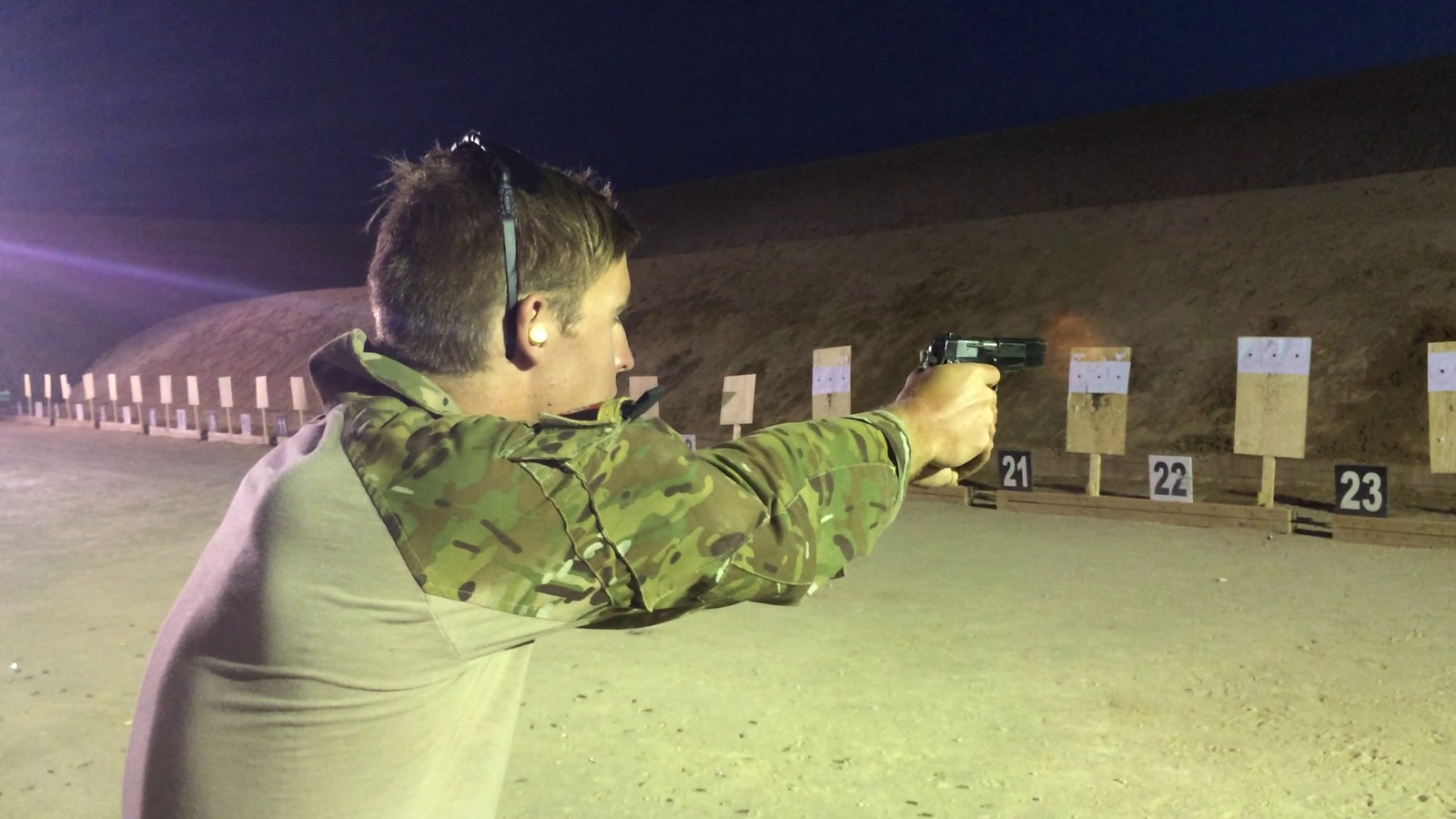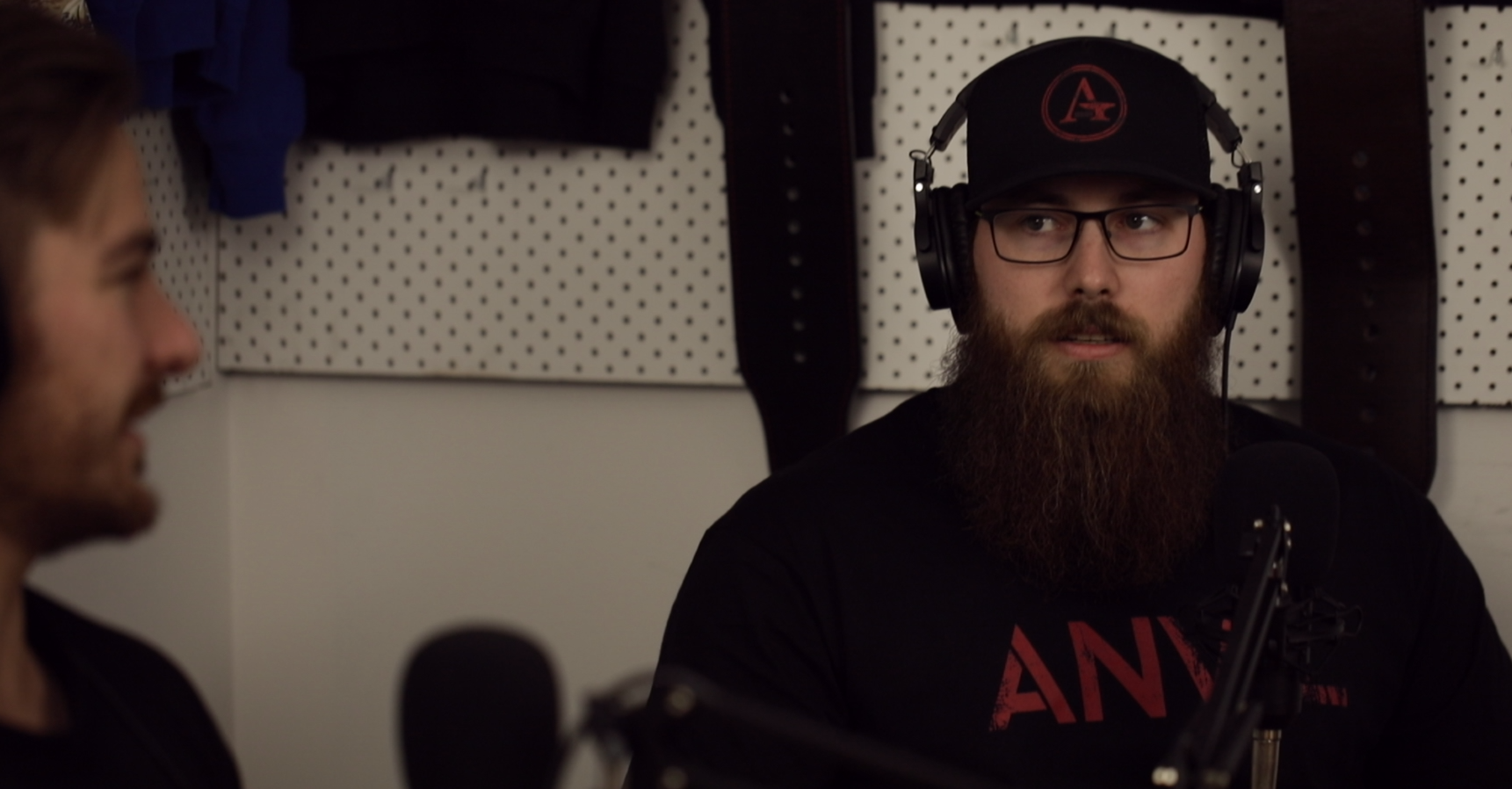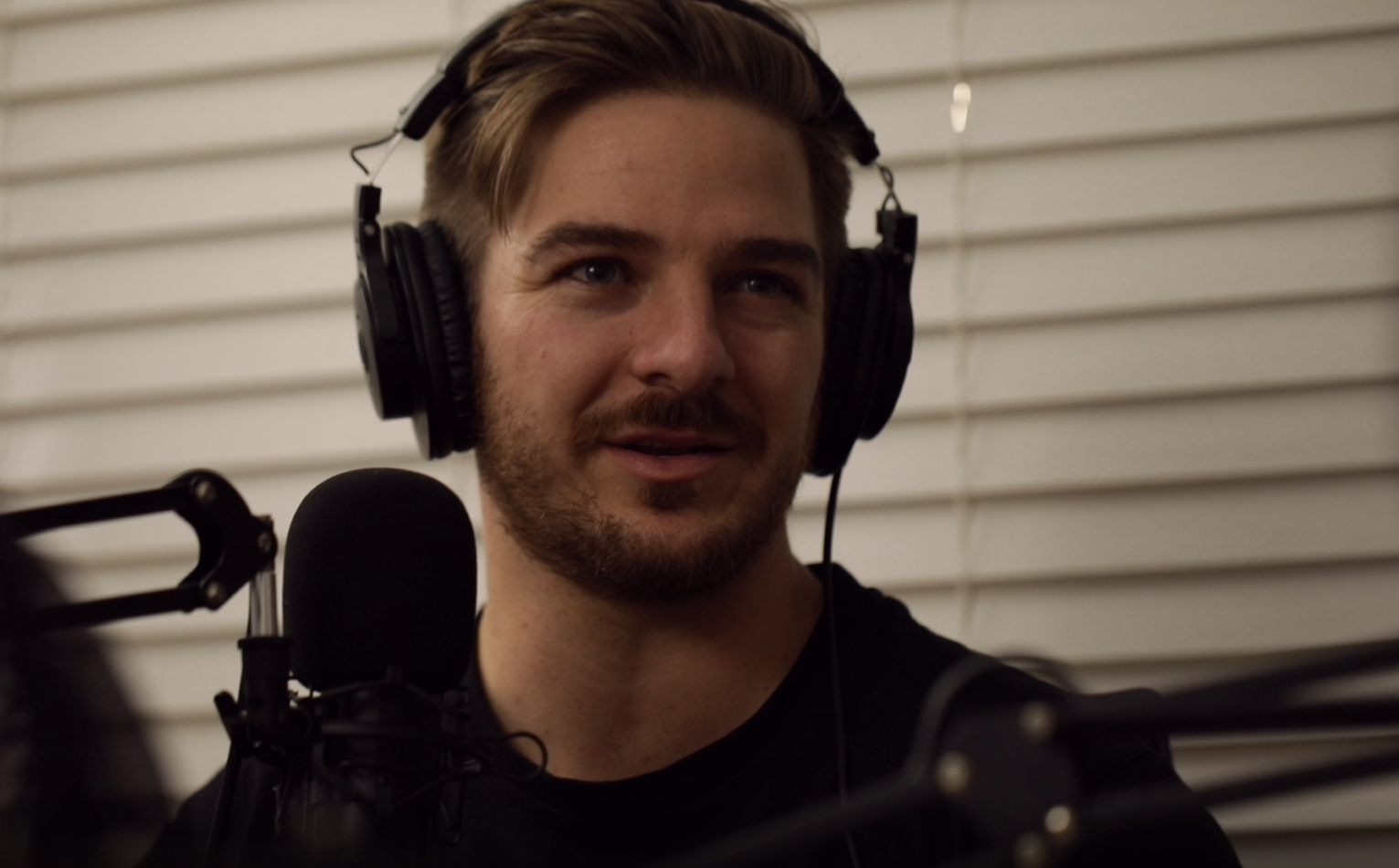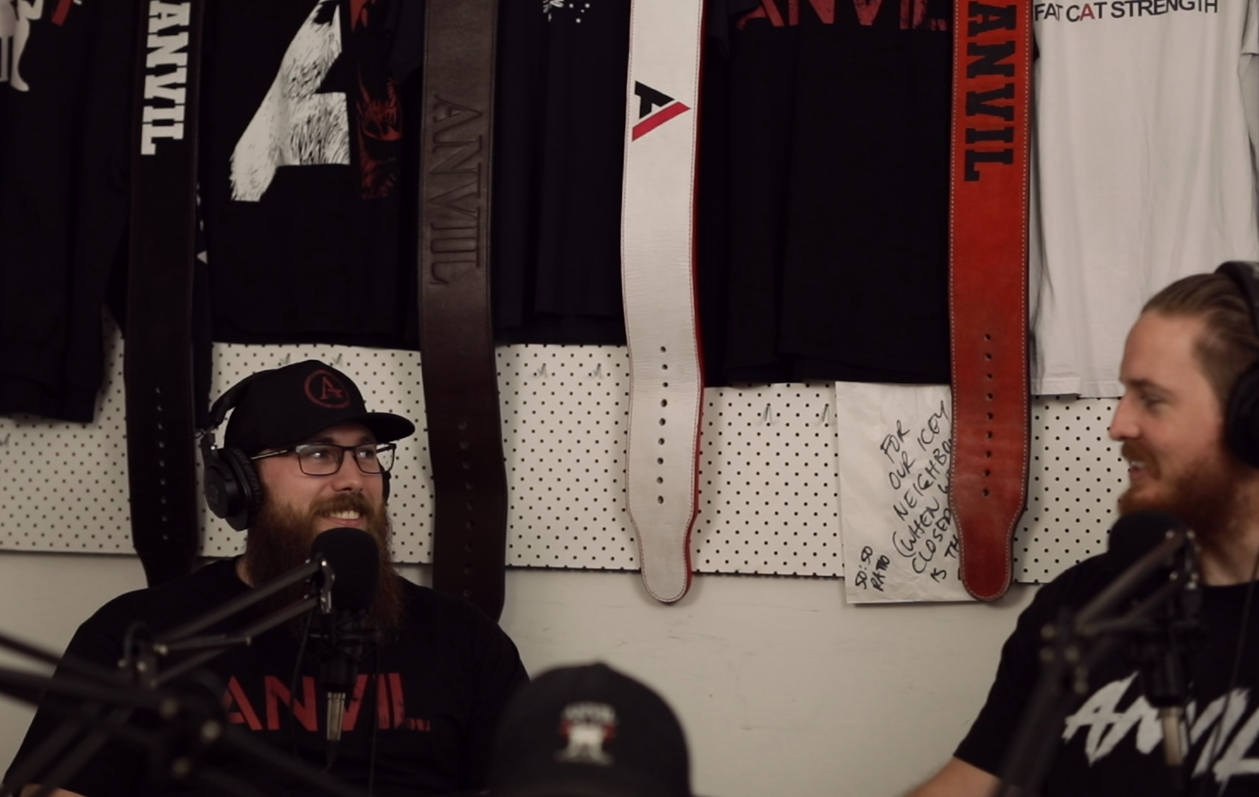What’s the Difference?

An Anvil Opinion Article by Marshall Officer
I want to preface this article by saying this is not just a rant about something that pissed me off. It is an attempt to demonstrate how an initial reaction to something probably isn’t the most productive response, and that it is important to take logical steps in your own thought process in order to clarify misunderstandings. Treating something with negativity or ignorance, or by avoiding the topic completely, can perpetuate ongoing stigma. I am a firm believer that having honest conversations about controversial topics is the only productive way to take a positive step forward on many important issues. Please take the time to read the entire article, as I think everyone (including myself) can learn a lot from expanding the way we think about controversial things, deeper than just surface level semantics.
It was recently brought to my attention that with the issues of gun control and mass shootings in the United States, it was counterproductive for me to post pictures of soldiers firing their weapons at the range on our Instagram page. The argument presented to me was, “If we are trying to promote a community focussed on positive mental health, pictures of us with guns will work against us, because gun control and mass shootings are at the forefront of social and political focus in the US.”
Initially, I had a whole range of different reactions to this perspective. As an infantry veteran who spent a significant period of his early adult life learning the specifics of various weapon systems, and subsequently teaching these to countless new soldiers as an Australian infantry instructor - I found it very difficult to see a correlation between civilian mass shootings, gun control debates, and images of soldiers on operations overseas. As a professional soldier, the importance of weapon safety, the lives of your mates, and the rules of engagement are drilled into you with every training scenario or learning opportunity. For a link to be considered between a supplementary image on an article post and the mass shootings overseas was deeply insulting.
The next thought that occurred to me was: if Anvil truly is an organisation that cares about opening up conversations to better educate ourselves and others about important issues affecting our community like mental health - we can’t ignore that one of the key causes of mental health struggles in the veteran community, Post Traumatic Stress Disorder, is commonly linked to military service environments.
After getting so angry I began folding all my fresh laundry (a task that I would usually put off for days at a time), I took some time to think about how I could respond to this issue. I ended up settling on this: although it may be hard for me to understand this perspective, and it may not be a statement I agree with - it does sit somewhere in the spectrum of a conversation about veteran mental health concerns. I made the decision that if someone is raising this particular issue with me, it is a perspective worth addressing, and an opportunity to clarify misunderstandings.
So, What’s the Difference?
This is the question that I believe we should be able to answer. As I said before, if we are serious about opening up the discussion about mental health (especially in regards to veterans), we need to be able to answer this question - no matter our initial reaction. A question like this is a clear indicator of one specific thing: the person or group asking doesn’t know the answer. They may not be in a position, or have relevant experience, to see the distinctions between the two scenarios. For them, a gun is just a gun, no matter who is holding it. This doesn’t mean that you cannot control the way you respond to questions like this. A reactive response in anger will not help either party address the mental health concerns underlying these two different situations, and may lead to an argument where nobody learns anything - contributing to the ongoing problem. Instead, we should attempt to have proactive conversations that address the question itself.
Firstly, let’s clearly define the two groups we are talking about, including their differences and similarities. Yes, despite my initial rage about being compared to a deranged mass shooter in the States, if we don’t address the similarities - we will always be at odds, and won’t be able to move forward. In this specific instance, we have two clear cut competitors for the title.
In the blue corner is a picture of a soldier firing his pistol at the range on operations in Afghanistan (link below). This was training we did on a weekly basis (if not more), and allowed us to stay at the top of our game with our particular tools of the trade. We were overseas as Guardian Angels (a fancy name for bodyguards); and our role was to protect important military and civilian advisors, members of the media, and other peacekeeping groups as they went about their unique tasks assisting Afghan military and government officials stabilise their nation. We carried an array of weapons primarily as a deterrent or last-resort option, mainly for protecting ourselves, our mates, and the advisory elements in a worst case scenario. We were in a hostile environment every day, outside of the safety of a base populated by allied soldiers. To give some context, although the Afghan National Army is our ally on paper, our highest threat element was called a Green-on-Blue, and it is a situation where we are attacked by a member of an allied Afghan group. We spent every day interacting with people from official Afghan army or police forces, wondering if today was the day they turned their weapons on us. We trained as much as we could to ensure that, if that terrible event did come to pass, we would not be sending one of our mates, an allied advisor, or even a civilian, home in a bodybag.
In the red corner is an article about Texas passing more “relaxed” gun laws, despite more than one recent mass shooting in the state. The article states “four of the deadliest mass shootings in the last decade have taken place in Texas”, but despite this, “instead of following other states’ lead and passing lifesaving legislation, like background checks and strong red flag laws, Texas’ governor and legislature have made even more lax gun laws”. It is very easy to find numerous sources for US shooting statistics. It is very easy to compare Australia and the US, and come to the conclusion that the US has far more shootings than we do here. However, as an extremely complex issue, it is very difficult to narrow down the exact causes. It is even harder to narrow down a widely accepted definition of mass shootings. I am not a registered psychologist, nor have I studied mass shootings, however, with some quick research, I was able to identify some clear contributors that would be ridiculous and naive to ignore. These include, in no particular order:
-
A huge population in the US with access to far more firearms (both legally and illegally), compared to many other nations with similar quality of living,
-
A flawed and outdated inequitable medical system preventing access to basic mental health care for the average person, and a focus on ‘reactive’ support strategies rather than ‘proactive’ intervention
-
A flawed education system that fails to teach professionals and the public about recognising mental health warning signs in children, each other, and themselves, until far too late,
-
An array of national media outlets with their own social, political, and economic agendas,
-
And legislation that is extremely difficult to change or modify without significant political clout, in a country with extremely diverse demographics.
So, in my personal opinion, the average criminal shooter in the US is more likely to be someone with some kind of diagnosed or undiagnosed mental health concern, that has some kind of social, political, or personal agenda, and believes there is no other way to get attention in line with this agenda than to take extreme, violent, action against a group of innocent people.
So, What’s the Difference?
Well, there are some clear and obvious differences right from the start. A soldier spends a large portion of their career learning the safe handling of various weapon systems, the rules of engagement for an infinite number of different scenarios, and the legal, moral and personal implications of the use of lethal force. Whilst it may be possible, it is unlikely that a mass shooter has close to the same level of training and education in these matters. A soldier, in this day and age, is generally supposed to be fighting for “good”. Now, this isn’t the right place for a discussion on political agendas and the various reasons for military engagement, but in our specific situation - we deployed to Afghanistan as part of a campaign to help stabilise the country, and our role was the protection of people who otherwise would not be able to fully protect themselves. A mass shooter is using extreme violence in order to draw attention to a particular issue they believe to be important - which in a political context is also a definition of ‘terrorism’. In any context, it is impossible to argue that the use of extreme violence against people who don’t pose any immediate threat, in order to draw attention to any issue, is wrong, evil, and requires an extremely poor state of mental health and education to be seen as a viable option.
Lastly, a soldier is held accountable for their every action. To treat your weapon without even the highest level of respect, for what it is capable of doing, results in punishment and re-training. Safety breaches are not tolerated, and weapons are kept in locked armories with extensive security measures. Simply accessing weapons, even as a soldier, must be done with an extremely good reason. Training is primarily done with blank rounds, however, the safety restrictions of live rounds still apply. This practice is drilled into you from day one. A firearm is a tool capable of killing and destruction. Even in the extreme situation that you might have to use it, you will respect what it is capable of and know how to use it so well that you can control it completely, as anything less than complete control at all times is unacceptable and could result in disastrous and unnecessary loss of life. A mass shooter has no awareness of or regard for these implications, and probably only sees a gun as nothing more than an inanimate object, without any comprehension for the consequences of their ownership or use.
So, there is a difference. But what about the similarities?
If I were to stop here, I would have addressed why I believe these two things should not, or could not, ever be compared. However, they have been compared. And in the face of this comparison, we need to understand why in order to make any kind of positive progress in the conversation about mental health.
Like it or not, both of these groups are deeply associated with violence. Both groups use weapons to accomplish their goals, and even as a deterrent, the soldier is carrying a gun and will use it if they have to. In these two scenarios, it is only the understanding of “if they have to” that makes a difference to the end result. A soldier believes that they “have to” use their weapon to prevent further loss of life. A mass shooter, with mental health concerns (diagnosed or undiagnosed), may somehow be making a similar argument. And, like it or not, both groups are deeply associated with mental health issues. Anvil probably wouldn’t even exist if there wasn’t such a huge problem with veteran mental health, and in Australia - veteran suicide is an enormous issue that we can’t seem to make any progress on. Mass shootings in the US are linked to failings on the part of the American medical system, and its ability to properly implement a proactive system of early identification and treatment for mental health issues.
The major difference in these two groups is that Australian veterans are taking their own lives, and American mass shooters are taking the lives of others.
I want to end on this note. It was suggested to me that I take down the picture of my close friend, and fellow veteran, firing his pistol at the range on operations in Afghanistan. But if we ignore these comparisons, or only react to them in anger, how can we possibly make any progress in challenging conversations about mental health? Whether we like it or not, people are dying because of mental health struggles that aren’t being acknowledged or properly addressed. Failure to publicly address mental health concerns rests on the fact that largely we are too afraid, or too angry, or too caught up in the details, to have a proper conversation with others about things that make us vulnerable. We need to start talking about mental health issues, and it needs to happen now. Ask the hard questions. Have the hard conversations. Address the warning signs early. Educate yourselves and those around you about the very real dangers of having mental health conversations in hushed tones, in the shadows, or behind closed doors.
Ask yourself, and ask your mates, and ask your colleagues, and ask that stranger: Are you ok? How can I help? It is not a sign of weakness or shameful to share your vulnerability with others, to ask for help. Having hard conversations with an open perspective of positive change will be productive.
Start talking about mental health. Before it’s too late, again.
Reference Material:
https://www.instagram.com/p/B14nMChDj9U/?utm_source=ig_web_copy_link
About Us
Anvil Training and Development is a group of Australian veterans who care about the physical and mental health of veterans and emergency service workers. We’re passionate about ongoing education and working with others to implement positive change.
Instagram: Anvil Training & Development - @anvil.td
Facebook: Anvil Training & Development - @anvil.td
www.anviltd.com
(Article Edited, Proof Read, and Fact-Checked by Charlotte Officer)
VES Mental Health Resources: https://anviltd.com/pages/ves-australian-mental-health-resources









Succinct as usual Marshall.
Leave a comment